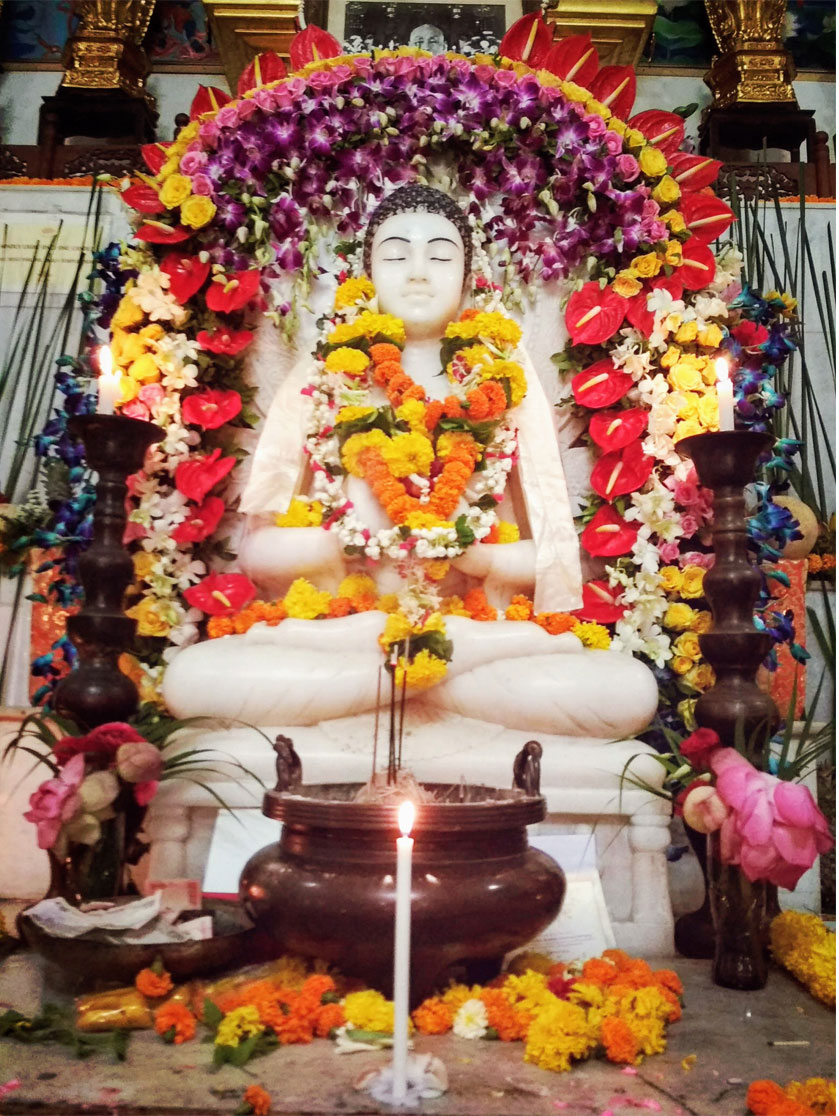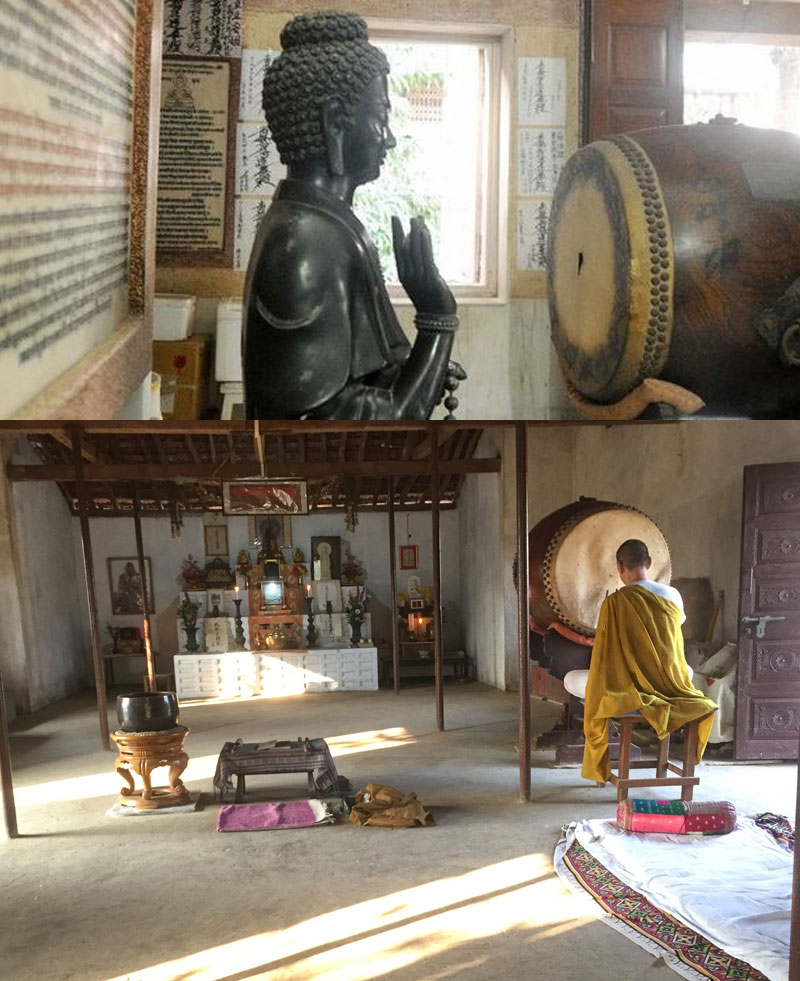NICHIREN JAPANESE BUDDHIST TEMPLE
Established in 1956, Nipponzan Myohoji’s origins are directly linked to a more-than-700-year-old prophecy by the 13th century Japanese Buddhist monk Nichiren (1222–82), who said that the ultimate.
salvation of humanity, contaminated by all that was evil and impure, lay in the western haven of India, the country that was home to Buddhism. Centuries later, another Japanese monk, Nichidatsu Fujii (1885–1985), a fervent pacifist and founder of the Nipponzan-Myohoji-
Daisanga order of Nichiren Buddhism, came to India in 1931 with a group of disciples, with the intention of fulfilling that prophecy by
communicating the Lotus Sutra in India. This Nichiren Japanese Buddhist Order and its inhabitants (the monks from the past and present) have vehemently conveyed messages of Satyagraha and Non - Violence during and post our Independence struggle and the Daimoku, “Na Mu Myoho Renge Kyo”, is today stronger and more powerful a symbol than ever before.
Nichidatsu Fujii, the pioneer of the sect, played a key role in the Indian Independence struggle and the sounds of the Uchiwadaiko continued to beat louder after 1947, thus spreading Buddhist dharma and peace, far and wide.
This 62 year old temple serves not only as a religious sanctuary but as a key link in strengthening relations between surrounding communities and also India and Japan. The temple was originally a Japanese Buddhist Monastery founded by Nichidatsu Fujii Guruji, a Japanese monk who was a dear friend of Mahatma Gandhi and contributed much to India’s non-violent freedom movement during 1931-38. Upon the grounds of the monastery Jugal Kishore Birla built this temple (funded by Raja Baldeo Das Birla), which officially opened on December 27, 1956 and has been maintained by the Birla trust ever since.
Mahatma Gandhi was so fond of Nichidatsu Fujii,that he began to call the Japanese monk “Guruji,” a name that has happily stuck for the rest of Nichidatsu Fujii Guruji’s 100 year life. In fact, the love and respect between the two men was so strong that Gandhi incorporated Guruji’s practice of drumming and chanting ‘Na Mu Myo Ho Ren Ge Kyo’ into his prayers for the rest of his life.


